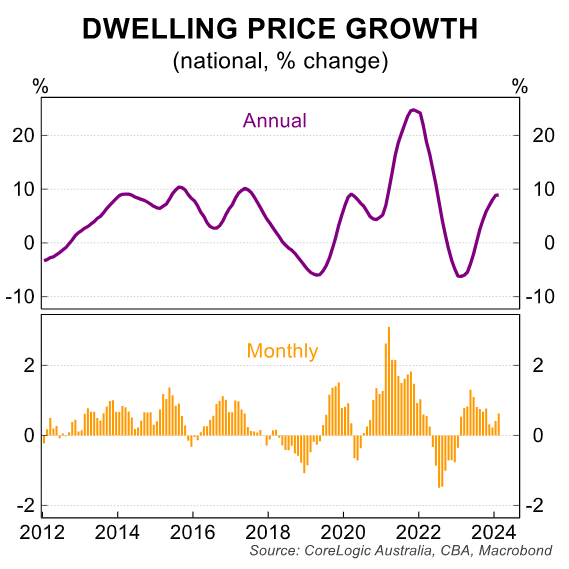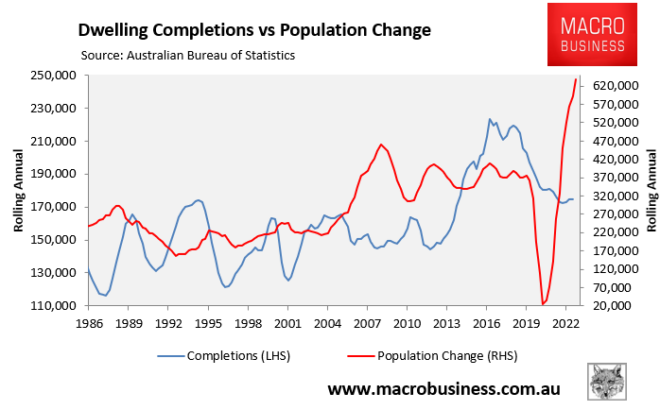CBA’s head of Australian economics, Gareth Aird, published a note examining the strong cyclical rise in both house prices and rents.
Aird notes that the uplift in prices is highly unusual given the aggressive monetary tightening from the RBA, which has dramatically reduced borrowing capacity.
“Dwelling prices have now risen by 10.7% since their cyclical trough in January 2023”, notes Aird.
“Indeed, national home prices now sit 1.8% above the previous cyclical peak of April 2022, which was reached on the eve of the RBA’s tightening cycle”.

“In less than two years the RBA has increased the cash rate by 425bps. And yet national home prices have risen over that period”.
“It is unusual to see price outcomes diverge from such a big deterioration in housing affordability. For context, home borrower capacity has fallen by ~30% due to the RBA’s rate increases”, Aird notes.
Aird, therefore, attributes the rise in housing costs to an imbalance in housing demand and supply, which has been primarily driven by record net overseas migration.
“The upward pressure on home prices stems from the big imbalance between the supply of new homes and the surge in Australia’s population”, Aird says.
“Home building has simply not kept pace with the massive upliftin population, primarily driven by net overseas migration”.
“As a result, vacancy rates have dropped to record lows in most capital cities and the rental market is hot”.

“This dynamic has seen renewed interest in housing from all buyer segments over the past year: owner-occupiers, investors and first home buyers”.
Aird also notes that demand from foreign buyers has picked up, which is providing additional upward pressure on house prices.
“Foreign buyers are also more active in the market”, he says.
“According to the latest NAB residential property survey the share of total market sales to foreign buyers in new housing markets increased for the fifth straight quarter. New sales to foreign buyers hit a 6½-year high of 10.1% in Q423”.

It is hard to draw any other conclusion. The rapid increase in mortgage rates and lower borrowing capacity should have caused house prices to fall. Instead, they are at record highs.
The only logical explanation is that the massive gap between housing demand and supply, illustrated below, has caused widespread FOMO (‘fear of missing out’) in the market, thereby fueling price growth.

This imbalance between supply and demand has also driven rental vacancy rates to historic lows, which has fueled the explosion in rental inflation and spurred buyer demand.
When the RBA commences its next rate-cutting cycle, this will boost borrowing capacity and provide another tailwind for home prices.

